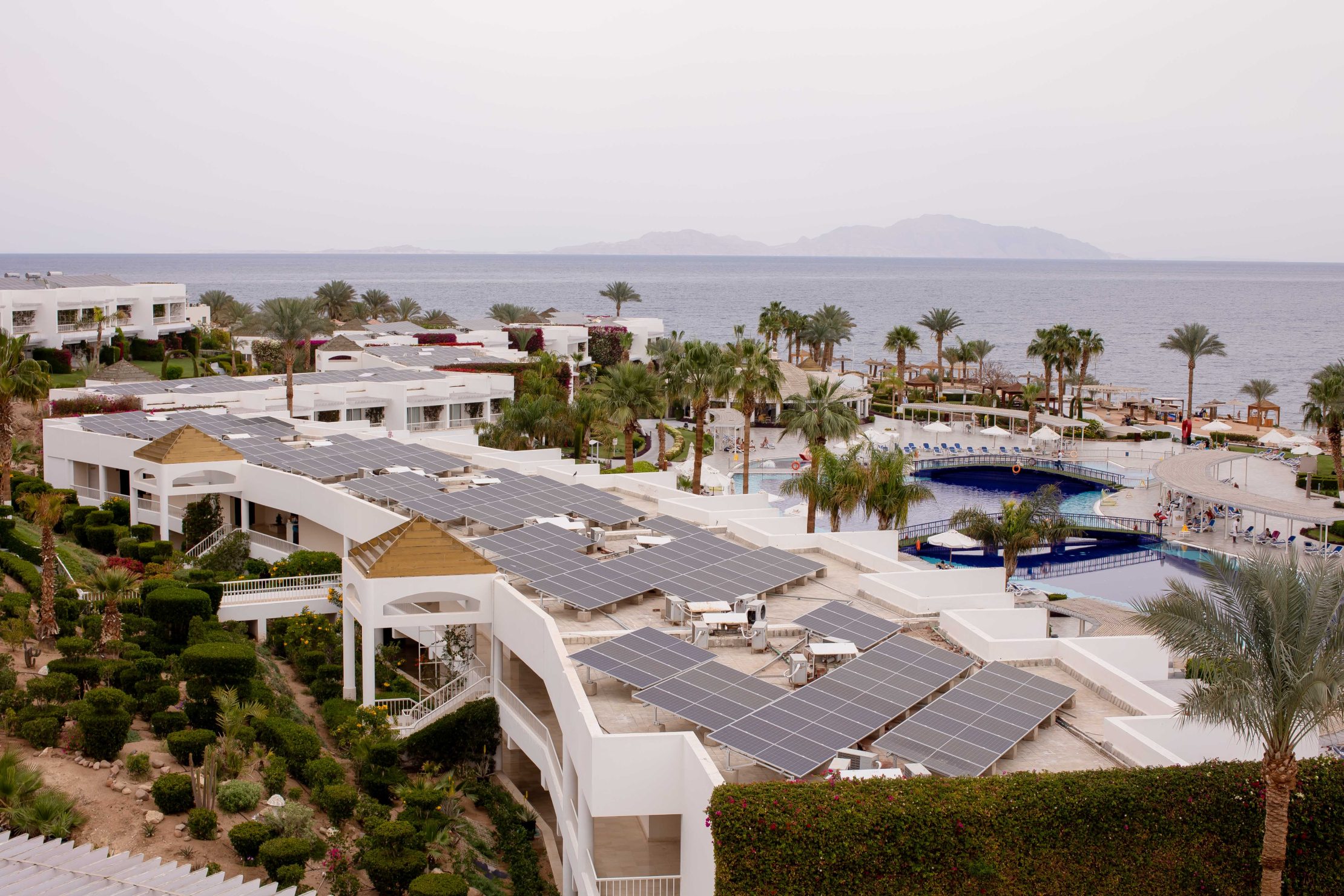
Photo: UNDP Egypt
Nestled between the Sinai Mountains and the Red Sea, Sharm El-Sheikh has transformed from a quiet fishing village into one of Egypt’s most vibrant tourist destinations. Beneath its global reputation lies a city embracing the opportunities of a transformative shift toward sustainability.
The Sharm El Sheikh transformation is a case study on how the tourism industry can lead a city’s green transformation. UNDP projects like Egypt PV and Green Sharm El Sheikh have demonstrated that small investments can yield large, transformative changes, planting the seeds for market-wide shifts in sustainability practices. The city had to find solutions for problems such as the high energy demands of hotels, the pollution from transport systems, and the waste from residents and visitors. These challenges, coupled with dependence on fossil fuels and vulnerability to climate impacts like rising temperatures, meant that it urgently needed a sustainable energy transition.
In 2022, when Sharm El-Sheikh hosted COP27, the demand for sustainable tourism aligned with Egypt's debut as the conference host and showcasing Africa’s commitment to climate action. For Egypt, this synergy led to launch of the Green Sharm El Sheikh initiative through a holistic green approach integrating sustainable energy solutions, biodiversity conservation and sustainable tourism.
Supported by UNDP and funded by the Global Environment Fund, multiple development partners as well as the Government of Egypt, this transformation focused on expanding renewable energy and energy efficiency, enhancing sustainable transport systems, promoting water conservation, improving waste management, advancing private sector green investments and supporting community-driven initiatives for sustainable tourism.
“At UNDP, we saw COP27 as a pivotal moment to accelerate Egypt’s transition to green and sustainable cities. Sharm El Sheikh, the host city of COP27, has become a showcase of what this transition can look like. In close partnership with the Government of Egypt, local authorities, the Ministry of Environment, the European Union, Japan and other stakeholders, we have been working on initiatives that go beyond renewable energy. From installing medium-sized solar power stations across the city to integrating small-scale photovoltaic systems in major hotels and landmark buildings - including the airport, the International Convention Center that hosted COP27, Sharm Museum, Sharm Hospital, public schools and universities, protected areas, and street lighting - our efforts have prioritized clean energy solutions. At the same time, we have championed plastic reduction strategies and community awareness campaigns, reinforcing a holistic approach to sustainability. These initiatives reflect a long-term commitment to transforming Sharm El-Sheikh into a leading international green tourism destination,” said Alessandro Fracassetti, UNDP Egypt Resident Representative.
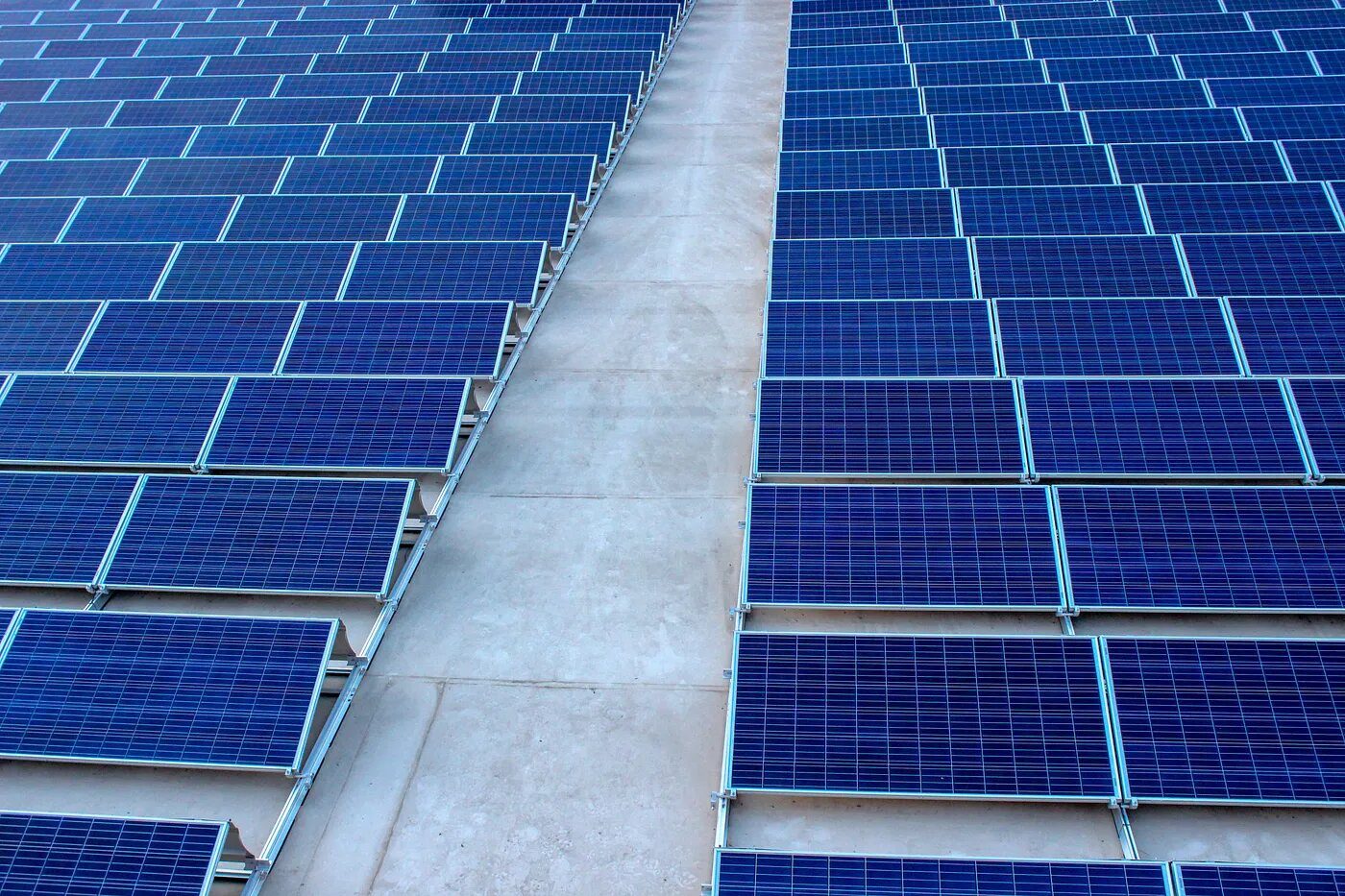
Photo: UNDP Egypt
Powering tourism with renewable energy
The tourism sector’s high emissions highlight ongoing challenges in aligning economic growth with climate goals. But rooftop solar panels and energy efficient systems are reshaping energy use in high-demand sectors.
As part of their green transformation, hotels in Sharm El-Sheikh adopted rooftop solar panels, energy-saving LEDs and water-saving technologies. With our seed funding, several large hotels invested in rooftop solar installations and energy efficiency measures. For example, the Sharm Bride Hotel installed a 650 kWp solar-PV system, with plans to expand it to 1.0 MW. Similarly, the Monte Carlo Hotel initially installed a 300 kWp solar system and later expanded its capacity to 850 kWp, covering 25 to 30 percent of its total electricity consumption. This initial investment led to savings on their energy bills, inspiring many other hotels and even entire chains to adopt similar renewable energy and energy efficiency initiatives.
As a result, the city saw significant growth in installed solar power capacities that reached 50 MW in 2024, ten times more the capacities in 2020, reducing carbon dioxide emissions by 4,050 tonnes annually – equivalent to preserving the carbon-absorbing capacity of 60 square kilometers of coral reefs. UNDP has previously supported the complete market transformation to energy-efficient LED lighting in Egypt that helped reduce electricity consumption by up to 30 percent in hotels.
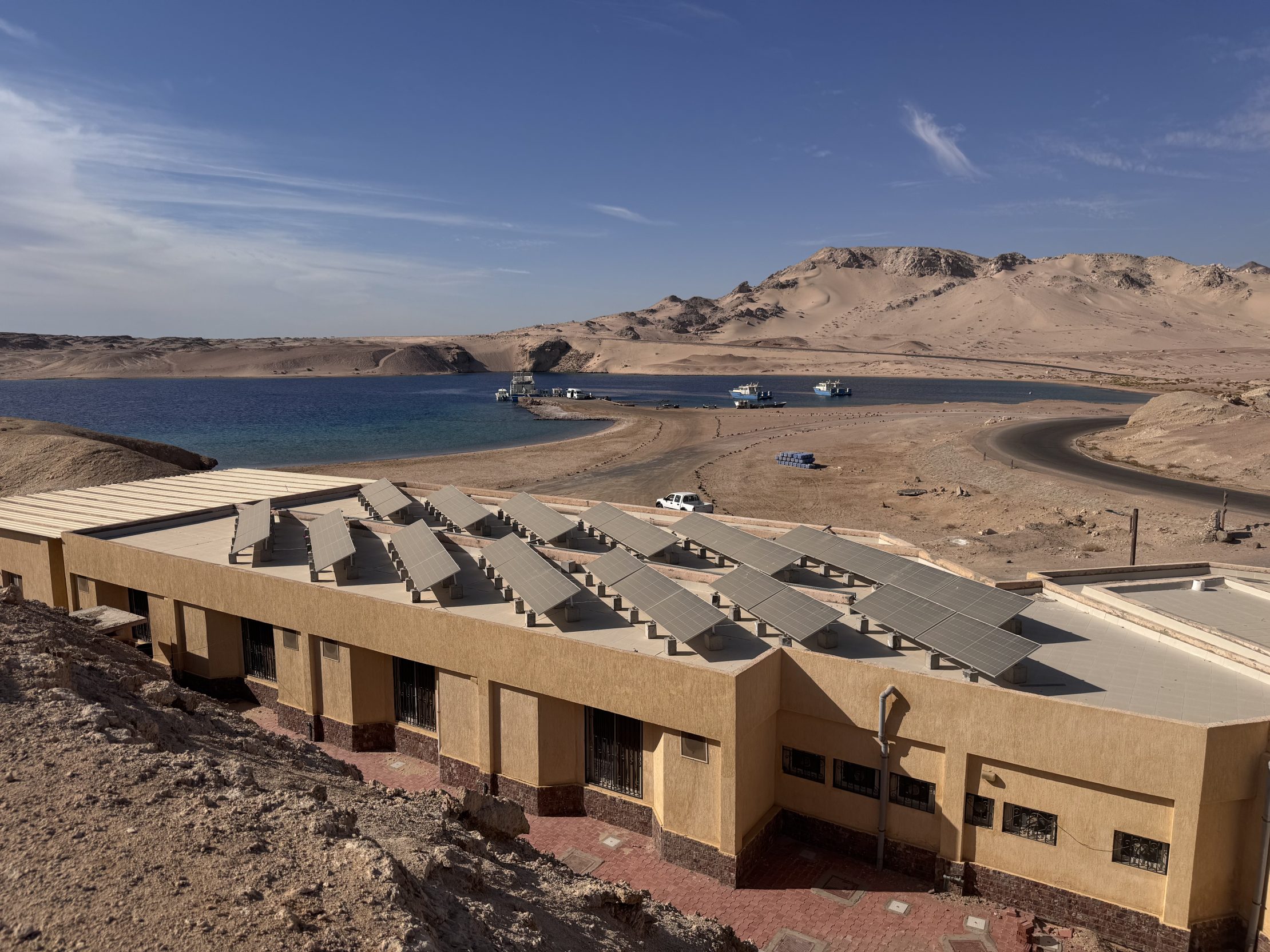
Photo: UNDP Egypt
Sharm El-Sheikh is becoming a mobile and waste-free community
To support eco-friendly transportation, the municipality has procured five electric buses that now ride on the streets of Sharm El-Sheikh. These buses do not only promote cleaner mobility, but they also reduce air and noise pollution, benefiting tourism. This is further supported by a growing cycling path network in the city.
At the same time, the city upgraded its waste management and wastewater treatment facilities. A new sanitary landfill minimizes leakage and prevents the open burning of solid waste, while a waste recycling plant improves resource recovery. UNDP has procured, with funds from the European Union, an emission-free autoclave unit for shredding and sterilizing healthcare waste in Sharm hospital to replace the transitional incinerator. Large investments were also made into improving water supply and wastewater treatment.
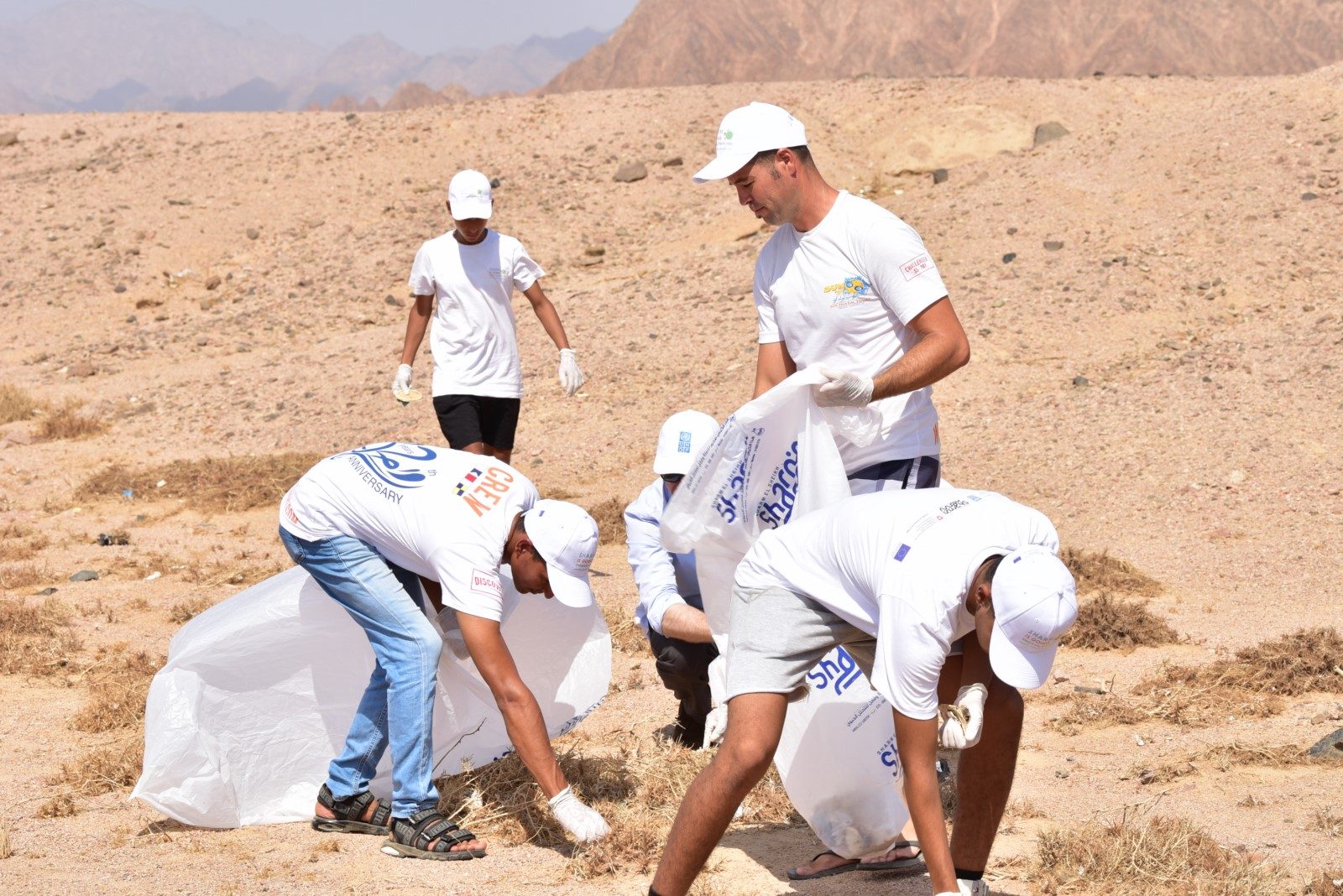
Photo: UNDP Egypt
Community involvement is crucial for environmental action
Community involvement was central to Sharm El-Sheikh’s green transformation, with residents actively participating in decision-making, adopting sustainable practices and benefiting from new opportunities.
Public campaigns, including awareness raising around energy efficiency and the distribution of 1.5 million reusable bags, fostered behavioral change, while local workers gained employment and skills through renewable energy installations, waste management projects and eco-tourism activities. Diving centers received green fins training, an eco-certification programme promoting sustainable diving practices to protect coral reefs through responsible tourism. A recent survey found that 82.7 percent of the city's residents are satisfied with street hygiene and beautification. Positive feedback also highlighted new green spaces.
Grassroots efforts including local community-led eco-tourism and sustainable tourism practices further strengthened local engagement. A key part of these efforts was also the involvement of Indigenous Bedouin communities in the Nabq Protected Area. Around 310 people participated in tailored training and technical support on transitioning to sustainable livelihoods like eco-tourism, handicrafts and environmental services. Through participatory mapping and consultations, Bedouin communities helped shape the region’s sustainable development, blending cultural preservation with economic opportunity.
Samar, an Egyptian entrepreneur, used solar power to make her eco-farm project succeed. “I had a dream of having my own business. And this dream is coming true. When I started my project, I was worried that solar panels would need maintenance and cost more. My perception completely changed when I learned more about the technology and the return on investment over the year. I am able to supply the farm with clean energy through solar panels that costs less than the cost of regular generators,” said Samar.
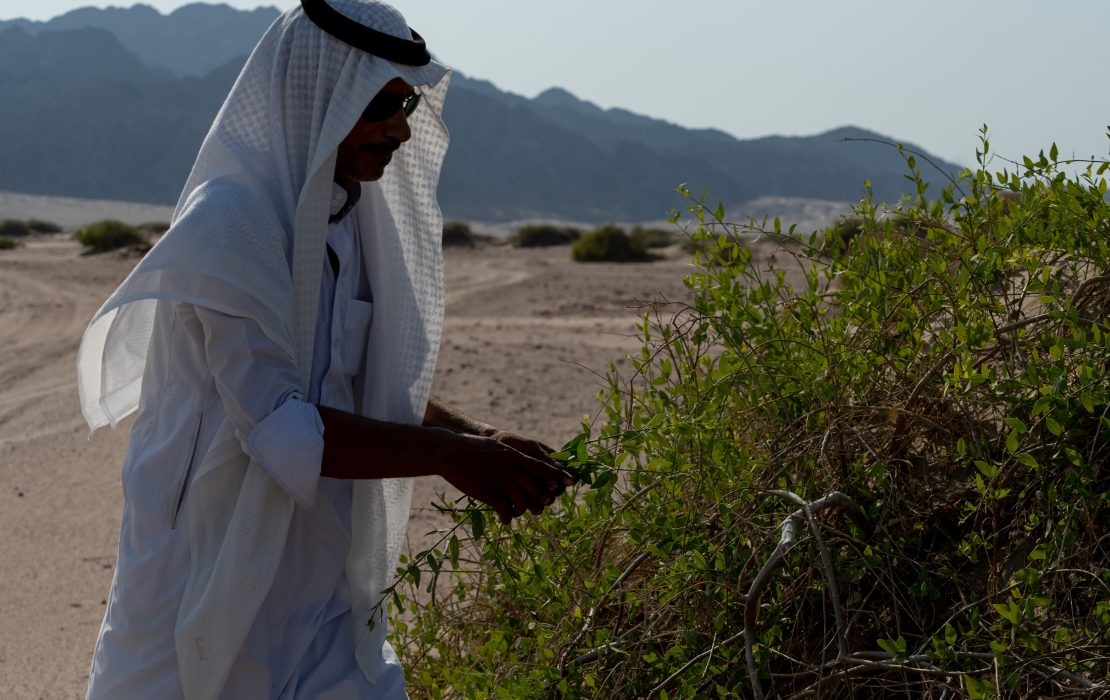
Photos: UNDP Egypt
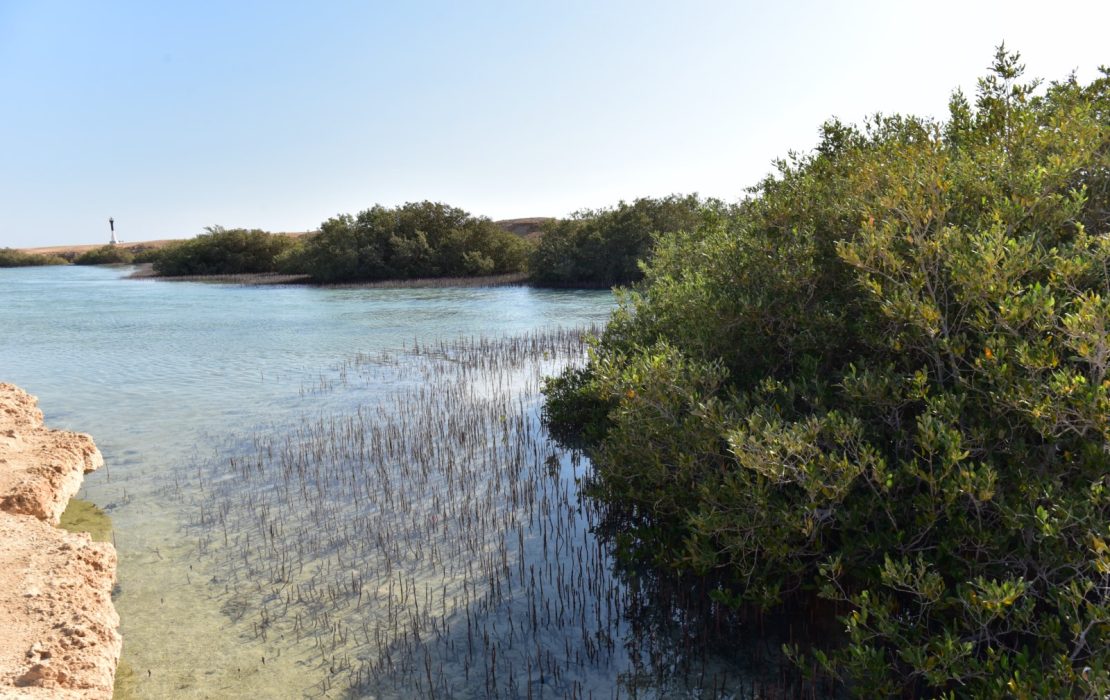
Cities can help build a green future
Sharm El Sheikh’s transformation underscores the critical role urban centers play in advancing national and global climate goals. Egypt’s updated Nationally Determined Contributions aim for 42 percent renewable energy by 2035. Targeted investments in sustainable infrastructure can help urban centers reduce emissions and strengthen resilience especially in areas particularly vulnerable in Egypt’s current socio-economic climate, exacerbated by regional instability such as the war on Gaza, which threatens up to five years of socio-economic progress.
As the initiatives in Sharm El-Sheikh demonstrate, green transformation is possible and has multiple benefits. With a relatively small investment in energy efficiency and renewable energy, Sharm El-Sheikh has sparked a broader transformation in market behavior, inspiring other cities and industries to pursue sustainable practices in green tourist destinations. In addition to lowering carbon emissions, these investments have helped reduce the cost of energy bills through solar energy, cut air and noise pollution through electric buses, foster cleaner environments through better waste management and plastic-free initiatives, and inspire community involvement.
*
The Green Sharm El-Sheikh project is funded by the Government of Egypt and the Global Environment Facility (GEF) and implemented by the Ministry of Environment in collaboration with the Governorate of South Sinai and UNDP.